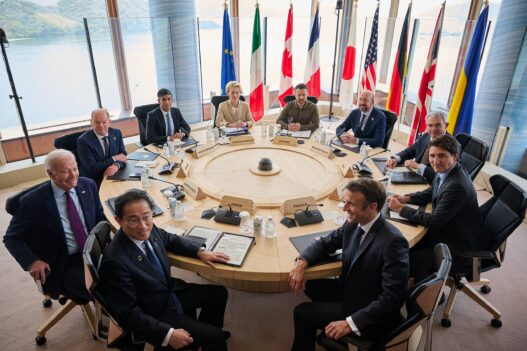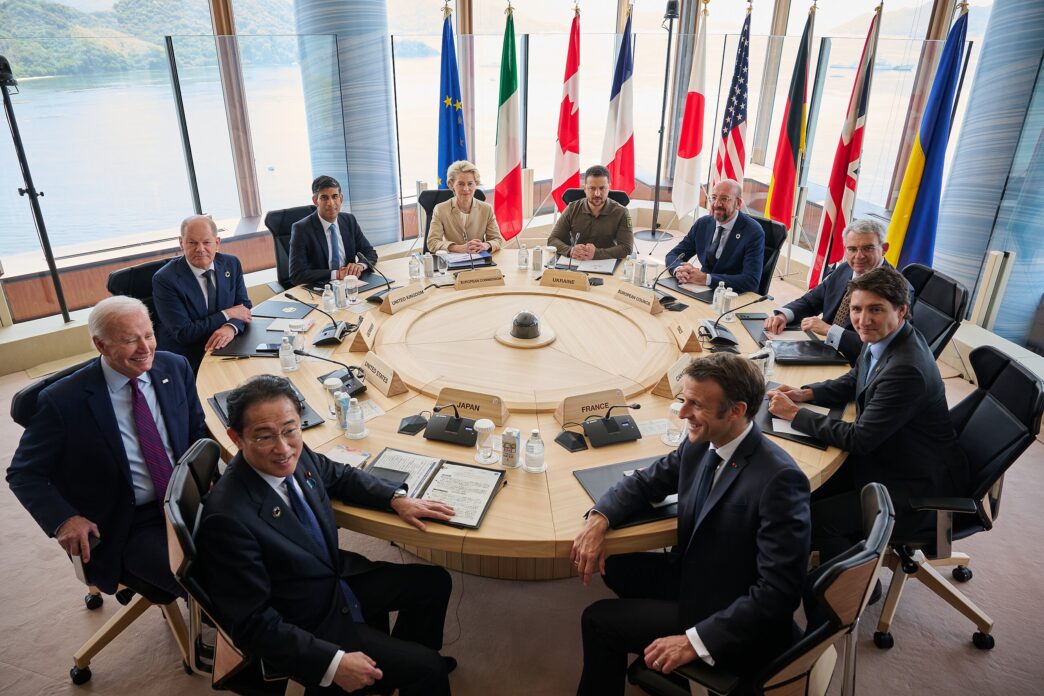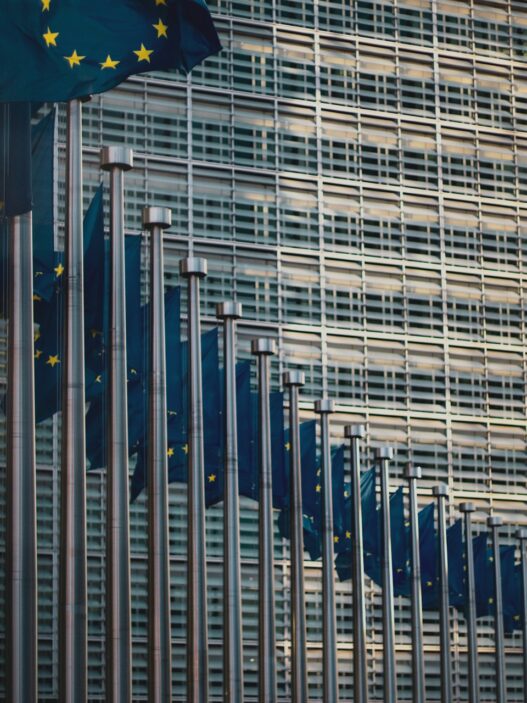Introduction
When the term “Zeitenwende” is mentioned, many in Germany think of the historic speech by Chancellor Olaf Scholz in the German Bundestag on August 29, 2022. Not only in European countries must security strategies be reconsidered following Russia’s attack on Ukraine. In East Asia, democratic countries face major geopolitical challenges. On one side, there is the People’s Republic of China, whose increasing military presence in the Indo-Pacific around Taiwan causes uncertainty. On the other, the North Korean regime’s numerous missile tests are a major concern for Japan’s Foreign Ministry. Consequently, headlines like “The world’s most radical Zeitenwende is happening in Japan” (CASPER 2022) appear in the daily media.
The commander of Amami expressed his concerns that a large neighboring country is trying to change the current situation by force, without directly mentioning China. In recent months, Japan has made significant upgrades and established military bases in Okinawa, Miyako, Amami, and Yonaguni. In March, another base was opened on Nansei’s fifth island, Ishigaki. In December, Tokyo’s government revised its national security strategy, emphasizing that Russia’s invasion of Ukraine had shaken the foundations of the world order. It states: “The possibility cannot be excluded that a similarly serious situation could occur in the Indo-Pacific region in the future” (SCHMIDT 2023). In Japan’s new security strategy, the country’s very pacifist stance is partially lifted, and it aims for its armed forces to be capable of conducting counterattacks.
This paper will explore how Japan’s “Zeitenwende” in security policy opens up new opportunities for enhanced cooperation with Europe. To this end, the first part will provide an overview of the geopolitical situation in the Indo-Pacific region and the security policy consequences for Japan. Following this, the possibilities for military cooperation between the EU, Germany, and Japan will be examined. Finally, a conclusion will be drawn from the discussions.
The geopolital siuation in East Asia
The Japanese government is deeply concerned about regional and international security policy developments. Japan’s new security strategy describes the security environment as the “most serious and complex” since World War II (SAKAKI 2023). The international world order is changing due to activities by various states. The Russian aggression in Ukraine means an escalation in the Indo-Pacific cannot be ruled out. Japan’s security policy faces three nuclear powers: China, North Korea, and Russia. These three countries have expanded their military capabilities and intensified military activities around Japan in recent years (SAKAKI 2023).
In 2013, Japan’s security strategy classified China as a “concern.” In the second and current version, China is described as the “unprecedented and greatest strategic challenge” (MATSUDA 2023). These formulations closely follow the security strategy of the USA, an ally of Japan. Here, China is referred to as the “most consequential geopolitical challenge.” Within the ruling coalition, a political debate arose as the Liberal Democratic Party (LDP) rejected terms like “threat.” The Komeito, a party with close ties to China, demanded that Japan strive for a stable and bilateral relationship with China. The strategy aims to build constructive relationships with China and prevent an escalation of tensions (ROHDE 2022). Militarily, the People’s Republic is the largest regional power in East Asia. In 2022, China’s defense expenditures were five times higher than Japan’s. China’s military buildup mainly includes investments in A2/AD (Anti-Access/Area Denial) capabilities. This includes extensive anti-ship weapons that make it harder for the USA and its allies to conduct military operations in maritime areas off China’s coast (SAKAKI 2023). Consequently, China is becoming increasingly assertive in its foreign policy and intensifies its military presence around Japan. In the security strategies, Beijing’s threats toward Taiwan are extensively addressed. In the 2013 version, the Taiwan issue was briefly mentioned (MATSUDA 2023). Tokyo is also concerned about the increased presence of Chinese Coast Guard ships near the Japan-controlled “Senkaku Islands” in the East China Sea, to which Beijing also lays claim (ZUOTAO 2018).
Japan’s security strategy considers North Korea to be an even “more serious and immediate” threat than the People’s Republic. The technological advancements in the development of long-range missiles and the increasing frequency of missile tests are monitored with great concern in Tokyo. In 2022, the North Korean regime tested 100 missiles, and in October 2022, a North Korean missile flew over the Japanese archipelago for the first time in five years. In mid-April 2023, the regime tested an intercontinental missile powered by solid fuel for the first time (SAKAKI 2023). The Japanese government is concerned that the technological advancements, such as road-mobile launchers, solid-fuel missiles, and irregular flight paths of North Korean missiles, make it more difficult to detect, track, and intercept them (SCHMUCKER & SCHILLER 2017). Under the leadership of Kim Jong-Un, North Korea also successfully conducted four nuclear tests, increasing the total number of tests to six. In 2018, the Japanese Ministry of Defense concluded that North Korea had successfully miniaturized nuclear weapons, meaning they have reduced warheads that fit on missiles of different ranges (ibid).
The Russian attack represents a clear breach of the international order for Japan. In the previous Japanese security strategy, calls for strengthening cooperation with Russia were made, but this demand is absent from the new strategic concept. Japan is concerned about the increasing cooperation between Beijing and Moscow in joint military maneuvers involving naval and air forces (MATSUDA 2023). Despite differences, strategists in Tokyo do not consider Russia an immediate military threat like China or North Korea. Instead, it is perceived as a “troublemaker” that forces Japan to keep defense resources in the north, hindering a stronger focus on the Chinese challenge in the southwest. In light of increasing regional tensions, Russia’s attack on Ukraine has shown Japan the real risks of a military conflict. China’s threats and its increasingly assertive claim over Taiwan have led Japan to question whether there are parallels to Russia’s actions in Ukraine. Although there are significant differences, both cases involve democracies facing an overwhelmingly autocratic nation (SAKAKI 2023). From Japan’s perspective, a military conflict over Taiwan can no longer be completely ruled out, as the USA has lost its status as the unchallenged military superpower (ibid).
Japan’s “Zeitenwende”
The current Japanese government, led by Prime Minister Fumio Kishida, has initiated a fundamental reorientation of Japan’s security policy. This shift has led to a noticeable departure from the traditionally pacifist stance enshrined in Article 9 of Japan’s post-war constitution. As stated in the latest security strategy, Japan aims to strengthen its “self-defense capabilities,” and no longer considers itself solely reliant on the defense support of the United States. The new policy calls for a significant increase in defense spending, aiming to reach 2% of GDP by 2027, thereby doubling Japan’s current expenditure. By comparison, Japan’s military budget is currently around 1.24% of its GDP, while Germany’s is about 1.44%.
Japan’s recent decision to acquire long-range missiles, capable of striking enemy bases even on foreign soil, has been a significant and somewhat controversial move within the context of the “self-defense” stance. In December 2022, Tokyo announced plans to purchase 500 “Tomahawk” cruise missiles from the United States, capable of hitting targets up to 1,600 kilometers away (SAKAKI 2023). This marks a pivotal shift in Japan’s defense posture, as the country had previously refrained from acquiring weapons capable of launching attacks on foreign soil since World War II. The reorientation of Japan’s defense policy is not limited to military hardware. The government has established a national security strategy task force, aimed at developing coherent and integrated defense policies across multiple domains, including cyber and space.
In addition, Japan has started to cultivate security alliances beyond its traditional partner, the United States. The government has signed multiple security agreements with countries like the United Kingdom and Australia, and has actively participated in joint military exercises with European partners. The collaboration with NATO is particularly noteworthy, as Japan has signed a joint statement with the organization, pledging closer cooperation in areas such as cybersecurity, space, and the defense of shared democratic values (NATO 2022). This further emphasizes Japan’s intention to assume a more active role in global security affairs and build a network of alliances.
Opportunities for Cooperation with Europe and Germany
The growing shift in Japan’s security policy provides new opportunities for enhanced cooperation with European countries. Historically, Japan’s collaboration with European nations has been limited to economic and diplomatic domains, but the current geopolitical situation has created an environment where closer military and security ties are both possible and desirable.
1. EU-Japan Strategic Partnership Agreement (SPA):
One of the significant frameworks for cooperation is the EU-Japan Strategic Partnership Agreement (SPA), which aims to promote collaboration in various fields, including security, human rights, climate change, and cyber resilience. This agreement, which came into force in 2019, represents a step toward formalizing EU-Japan cooperation beyond trade, opening avenues for joint efforts in maritime security, counterterrorism, and peacekeeping.
2. Bilateral Cooperation with Germany:
Germany, as one of Europe’s leading economies and a prominent player in EU affairs, has the potential to be a strategic partner for Japan in the security domain. In 2021, the German Navy frigate “Bayern” was deployed to the Indo-Pacific region, signaling Germany’s increased interest in participating in the security dynamics of the region. This move offers an opportunity for joint military exercises, intelligence sharing, and collaboration on defense technology between Germany and Japan.
3. NATO-Japan Cooperation:
NATO has been strengthening its partnerships with countries in the Asia-Pacific region, and Japan has emerged as a key partner. The joint declaration between NATO and Japan reflects an interest in cooperating on issues such as cybersecurity, space security, and maintaining the rules-based international order. Japan’s closer ties with NATO members in Europe could lead to more coordinated responses to shared security challenges.
4. Addressing Common Challenges:
Japan and European countries face similar security challenges, such as threats to critical infrastructure, cyberattacks, and challenges posed by authoritarian regimes. Closer cooperation could involve joint cyber defense exercises, sharing best practices for protecting critical infrastructure, and coordinating responses to regional and global threats.
Japan’s willingness to engage with Europe in security matters signifies a shift in the country’s foreign policy approach. By building closer ties with European partners, Japan can diversify its alliances and reduce reliance on the United States for its security needs.
Conclusion
Japan’s “Zeitenwende” in security policy reflects a significant change in the country’s approach to international affairs. The increasing military assertiveness of neighboring countries and the need to adapt to new geopolitical realities have prompted Japan to take a more active role in global security. This shift presents an opportunity for enhanced cooperation with Europe, offering a chance to build stronger partnerships that extend beyond economic and diplomatic relations.
In the future, collaboration between Japan and Europe in areas such as cybersecurity, military technology, and maritime security could help address shared challenges and contribute to maintaining peace and stability in both regions. The willingness of both parties to engage in dialogue and joint initiatives will determine the success of these new opportunities for cooperation.
Bibliography
- Casper, M. (2022). “Die radikalste Zeitenwende der Welt findet in Japan statt.” Frankfurter Allgemeine Zeitung.
- Schmidt, J. (2023). “Japan’s New Security Strategy: A Turning Point in Asia.” Asia Policy Journal.
- Sakaki, A. (2023). “Japan’s Revised National Security Strategy: A Reflection of a Changing World Order.” Security Studies Quarterly.
- NATO. (2022). “Joint Declaration by the North Atlantic Treaty Organization and Japan.” Retrieved from www.nato.int
- Matsuda, H. (2023). “Japan’s Defense Policy Shift: Implications for the Indo-Pacific.” Journal of East Asian Studies.
- ZUOTAO, Y. (2018). “China-Japan Relations and the Senkaku/Diaoyu Islands Dispute.” Asia-Pacific Review.
- Schmucker, C., & Schiller, B. (2017). “North Korea’s Nuclear Threat: Implications for Japan’s Security.” Global Security Journal.



















